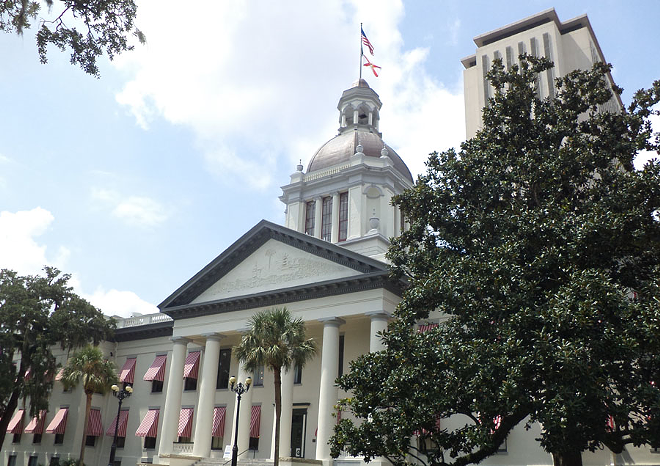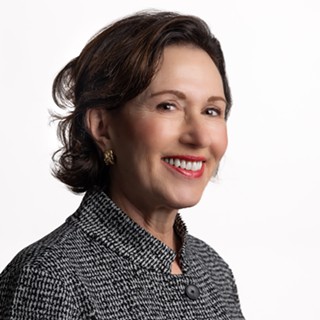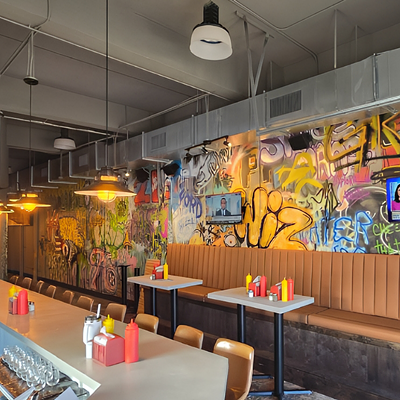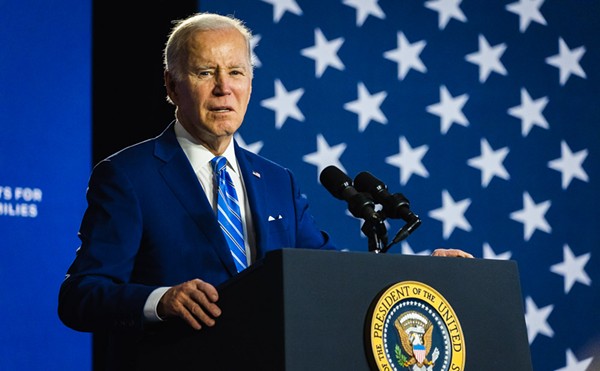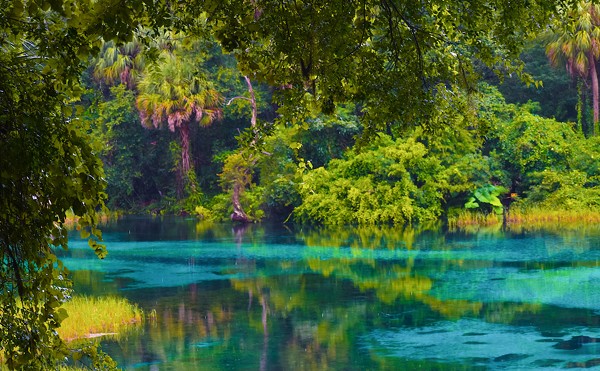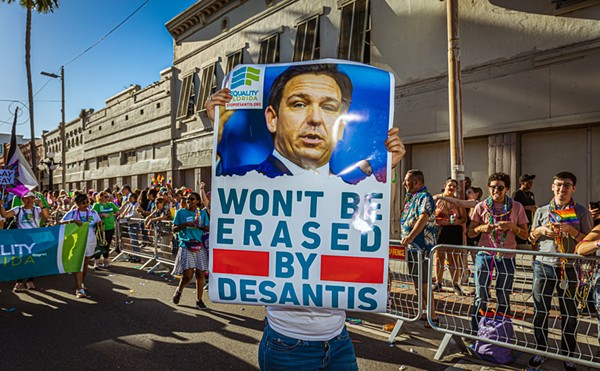Design-wise, as well as politically, Florida is very awkward.
Ethnically, the very white-bread, Southern, horizontal plane of the Panhandle doesn’t gracefully balance the northern/ethnic vertical stretch from Orlando to Key West.
Architecturally, too, Florida has a split personality. Aside from the preponderance of you-could-be-anywhere homes/condos mass-produced in shades of beige throughout the state, the two parts are dramatically different.
The Panhandle, with its pine forests and gently rolling topography, favors a red-brick and horse-farm vernacular. The bucolic campuses of Florida State and the University of Florida embody this tradition of classical brick dorms and classrooms with majestic oaks sprinkled throughout — a very Virginian vibe.
Politically, these two university towns with their progressive students and faculty are blue dots dropped into a sea of red voters. This NRA-rich region — buoyed economically by state prisons and grand highway projects constructed with no relationship to need — is more closely related to Alabama and Georgia than the rest of the state.
The hotly contested question of where to locate the state capital, which had been alternating between Pensacola and St. Augustine, was settled in 1824 by selecting a mid-point between the two: Tallahassee. The Capitol building dates from 1848, its vintage reflected in the traditional white-columned portico and dome.
After the Civil War, Florida was dirt poor, and not much was built for decades. Crops failed due to cruel freezes, and the state population in 1900 was 528,000.
The so-called “tin can tourists” started visiting after World War I, traveling in trailers and Model T fords and staying in tents or tiny cabins forming a horseshoe around the rental office. As Florida’s economy moved from agriculture to tourism, the billboard industry began shaping the aesthetic of our streets at the same time that the road builders started to reshape the countryside.
During the heady days of the 1920s, imaginative architects understood the allure of the Florida fantasy and began designing buildings in the “Mediterranean Revival” style, which was really a mash-up of Italian and Spanish motifs. The red barrel-tile roofs, shady loggias facing fountains, thick stuccoed walls and wrought-iron balconies were wonderfully romantic and became de riguer for new developments from Miami to St. Pete.
As we hit the I-4 corridor, both the politics and architecture of Florida shift dramatically. The growth spurt in central and south Florida kicked in after World War II, when GI’s were stationed here and fell in love with the weather and sense of possibility.
The shift from trains and buses to cars reshaped the towns and cities, so that the traditional courthouse square bounded by the Baptist church and civic buildings gave way to sprawling suburbs and shopping malls.
This mid-century boom was accompanied by new building materials which allowed developments to spring up ever more quickly. Plywood, concrete block, aluminum and plastic meant that the Bauhaus aesthetic of flat roofs, “birdcages” around swimming pools and horizontal window bands was easily realized.
At its best, the Sarasota School of Architecture, exemplified by Paul Rudolph’s elegant, seemingly simple homes, presented the world with a clean, sophisticated sense of the “Florida look.”
Most new development was not that inspired. Cars with jazzy fins reflected the flashy look of the signage going up at strip malls. Homes went split-level, with carports dominating the fronts. Low and beige with plenty of parking was the design aesthetic that spread to schools, public buildings and stores. The creation of Disney World in the mid-’60s became the dominant metaphor for Florida and the template for design — bright and garish.
The Florida of 2 million, then 5, then 10 and now 22 million residents can’t be summed up by a single icon because of its dramatic diversity, so here’s my proposal:
Create the Panhandle State, which can cleave to the magnolia-blossom-and mint-julep-on-the-veranda scenario, vote for Billy Bob, and let everyone walk around with guns from now to next Tuesday. Let them pave over the fragile waterways and dump in the rivers — but stop these dreadful environmental sins at the border.
Allow the portion of Florida south of the I-4 corridor to form a much hipper state, with a savvy sense of style and, hopefully, progressive leaders who will protect the aquifer and introduce a rail system. This New Florida can start recharging the Everglades and establishing swaths of protected land.
Since the existing setup is so flawed, Florida deserves the chance to split into its two authentic selves.

